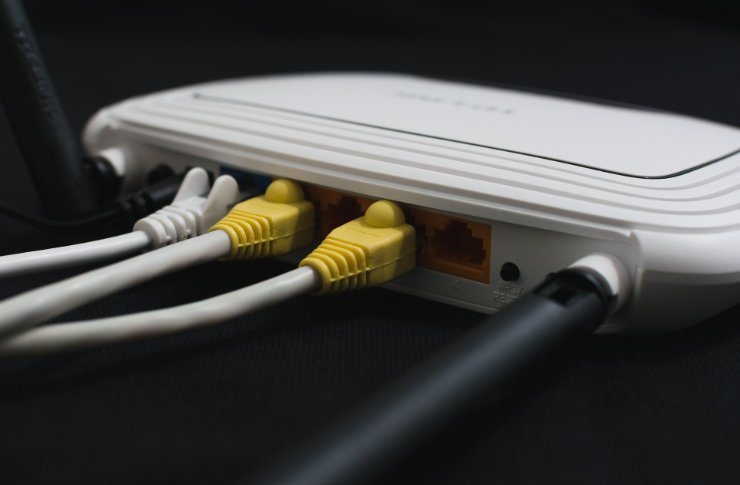Terahertz Communications: Unlocking Ultra-High-Speed Data Transmission
The quest for faster, more efficient data transmission never ends. As our digital world expands, so does the need for revolutionary communication technologies. Enter terahertz communications, a groundbreaking frontier that promises to transform how we transmit and receive data. This emerging field harnesses the power of terahertz waves, offering unprecedented data rates and opening new possibilities for wireless connectivity.

Historical Context and Technological Breakthroughs
The exploration of terahertz waves for communication purposes dates back to the early 2000s. However, significant technological hurdles, such as the lack of efficient terahertz sources and detectors, initially hindered progress. Over the past decade, advancements in semiconductor technology, photonics, and materials science have led to breakthroughs in terahertz generation and detection methods. These developments have paved the way for practical terahertz communication systems, moving the technology from laboratory experiments to real-world applications.
Unparalleled Data Rates and Low Latency
One of the most compelling aspects of terahertz communications is the potential for staggering data rates. Theoretical calculations suggest that terahertz systems could achieve speeds of up to several terabits per second, far surpassing current wireless technologies. This immense capacity could revolutionize data-intensive applications, enabling real-time streaming of ultra-high-definition content, seamless virtual and augmented reality experiences, and instantaneous cloud computing.
Moreover, terahertz communications offer extremely low latency due to the high-frequency nature of the signals. This characteristic makes terahertz technology particularly attractive for applications requiring near-instantaneous response times, such as remote surgery, autonomous vehicles, and industrial automation.
Overcoming Technical Challenges
Despite its promise, terahertz communication faces several technical challenges that researchers are actively addressing. One significant hurdle is the high atmospheric absorption of terahertz waves, which limits transmission range. Scientists are exploring various techniques to mitigate this issue, including the development of novel materials with enhanced terahertz transmission properties and adaptive beamforming technologies to optimize signal propagation.
Another challenge lies in the design of compact, energy-efficient terahertz transceivers. Researchers are making strides in this area by leveraging advances in integrated circuit design and nanoscale fabrication techniques. These efforts aim to create practical, cost-effective terahertz communication devices suitable for widespread deployment.
Potential Applications and Industry Impact
The applications of terahertz communications extend far beyond traditional wireless networks. In data centers, terahertz links could provide ultra-high-speed rack-to-rack connections, significantly enhancing data transfer rates and reducing latency. In the automotive industry, terahertz technology could enable high-bandwidth vehicle-to-vehicle and vehicle-to-infrastructure communications, supporting advanced driver assistance systems and autonomous driving capabilities.
The aerospace sector is also exploring terahertz communications for satellite-to-satellite links and high-altitude platform stations. These applications could provide global high-speed internet coverage and improve Earth observation capabilities. Additionally, terahertz technology shows promise in medical imaging, security screening, and quality control in manufacturing processes.
Regulatory Landscape and Standardization Efforts
As terahertz communication technology matures, regulators and industry bodies are working to establish frameworks for its deployment. The International Telecommunication Union (ITU) has begun discussions on allocating spectrum for terahertz communications, recognizing its potential impact on future wireless ecosystems. Standardization efforts are also underway, with organizations like the IEEE developing protocols and specifications for terahertz communication systems.
These regulatory and standardization initiatives are crucial for ensuring interoperability, spectrum harmonization, and the smooth integration of terahertz technology into existing communication infrastructures. They also play a vital role in fostering innovation and investment in this emerging field.
Environmental Considerations and Energy Efficiency
As the world becomes increasingly conscious of energy consumption and environmental impact, terahertz communications offer potential advantages. The high data rates and efficiency of terahertz systems could lead to reduced power consumption per bit of data transmitted compared to current technologies. Additionally, the ability to transmit large amounts of data over short distances with minimal infrastructure could result in a smaller environmental footprint for certain communication networks.
However, researchers are also investigating the potential biological effects of prolonged exposure to terahertz radiation, ensuring that safety standards are established as the technology develops. Initial studies suggest that terahertz waves have minimal impact on living tissues due to their low penetration depth, but ongoing research continues to evaluate long-term effects.
A Glimpse into the Future of Communications
Terahertz communication technology stands at the cusp of revolutionizing the way we transmit and process information. Its potential for ultra-high-speed data transmission, coupled with low latency and vast available bandwidth, positions it as a key enabler for future communication systems. As researchers overcome technical challenges and regulatory frameworks evolve, we can expect to see terahertz technology integrated into various applications, from next-generation wireless networks to specialized industrial and scientific systems.
The journey towards practical terahertz communications is emblematic of the constant innovation driving the telecommunications industry forward. As this technology continues to develop, it promises to unlock new possibilities in connectivity, paving the way for applications we have yet to imagine. The future of communication is bright, and terahertz waves may well be the key to unlocking its full potential.





